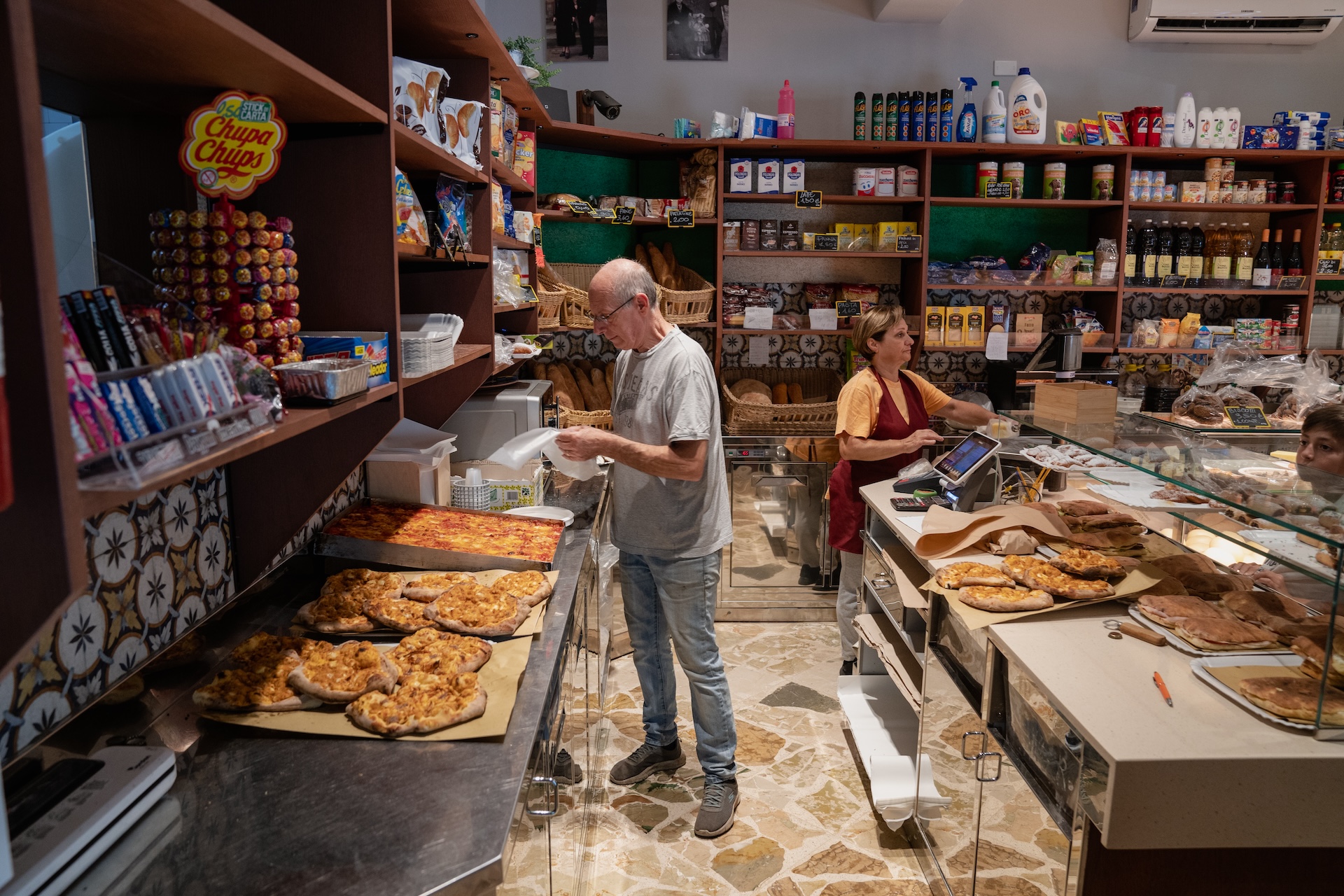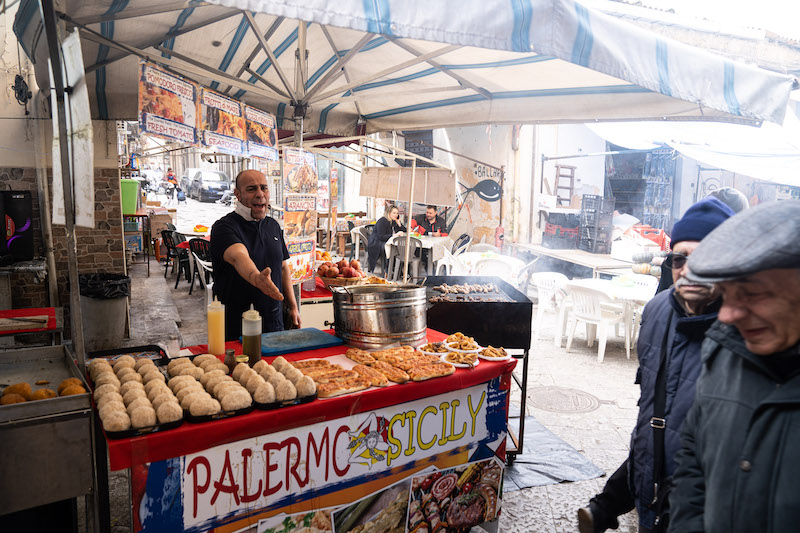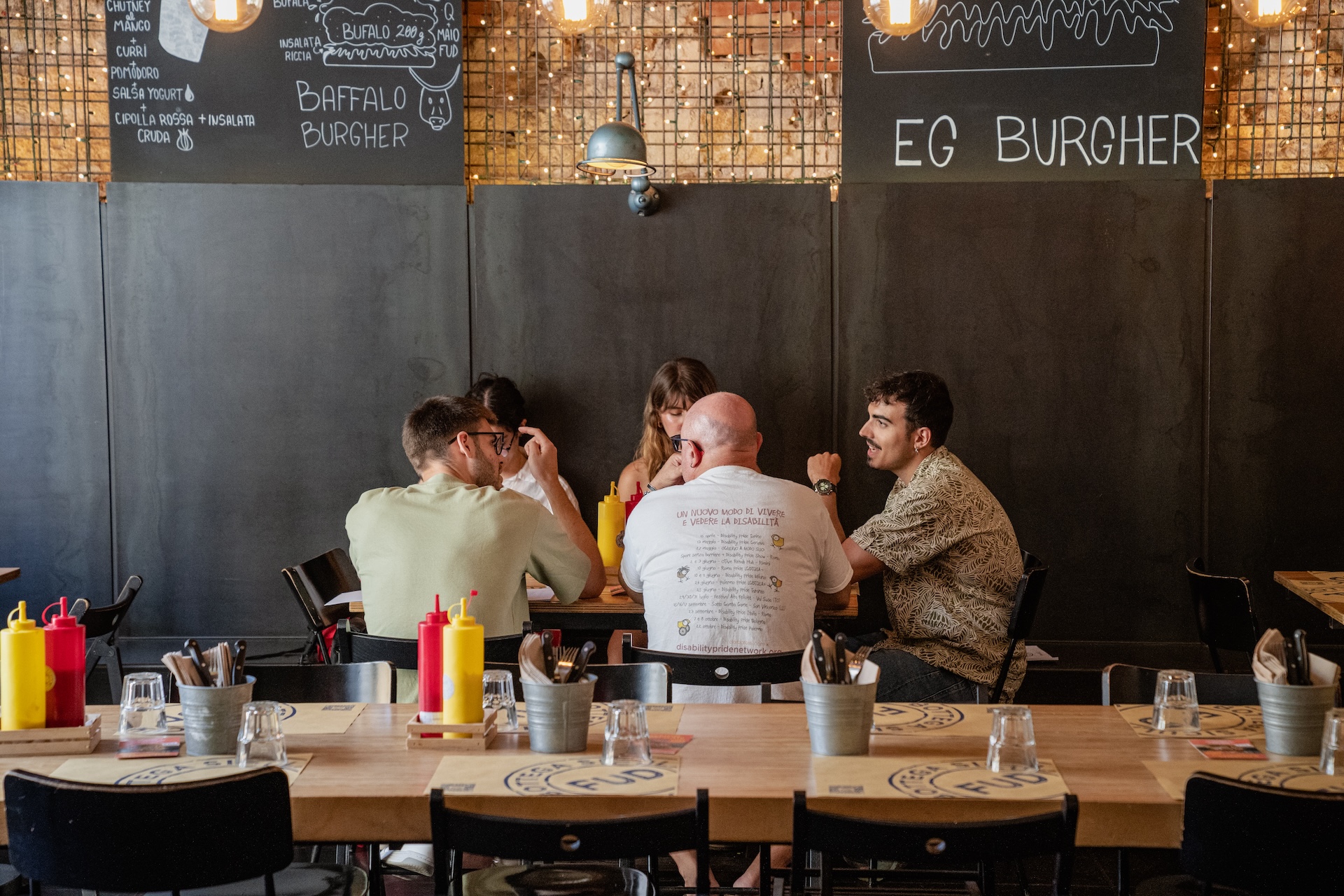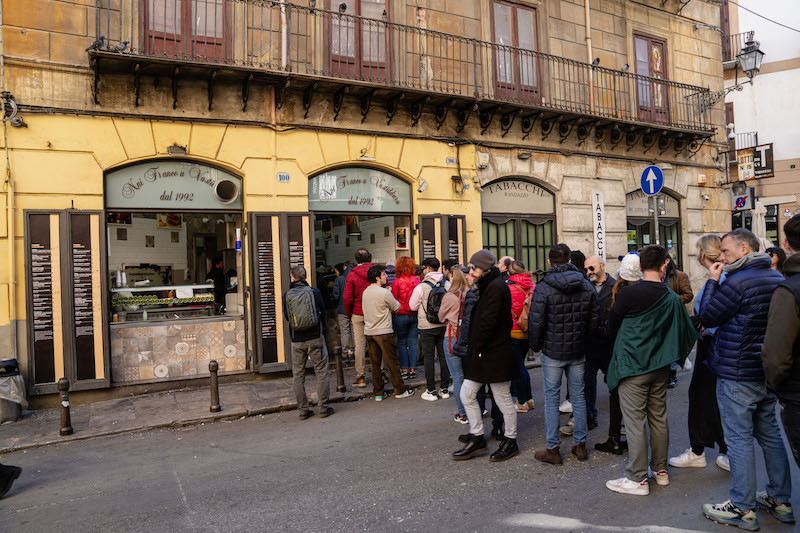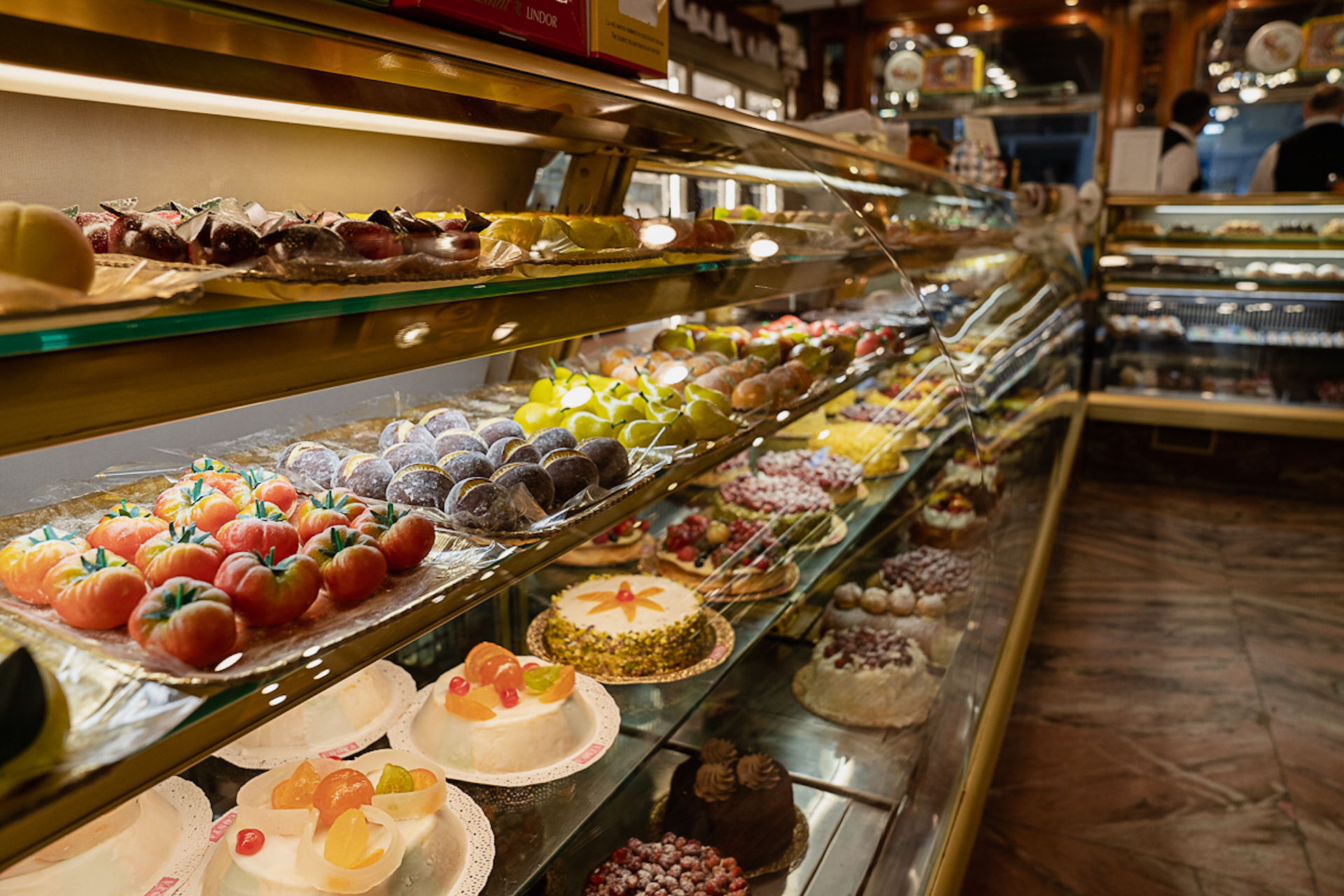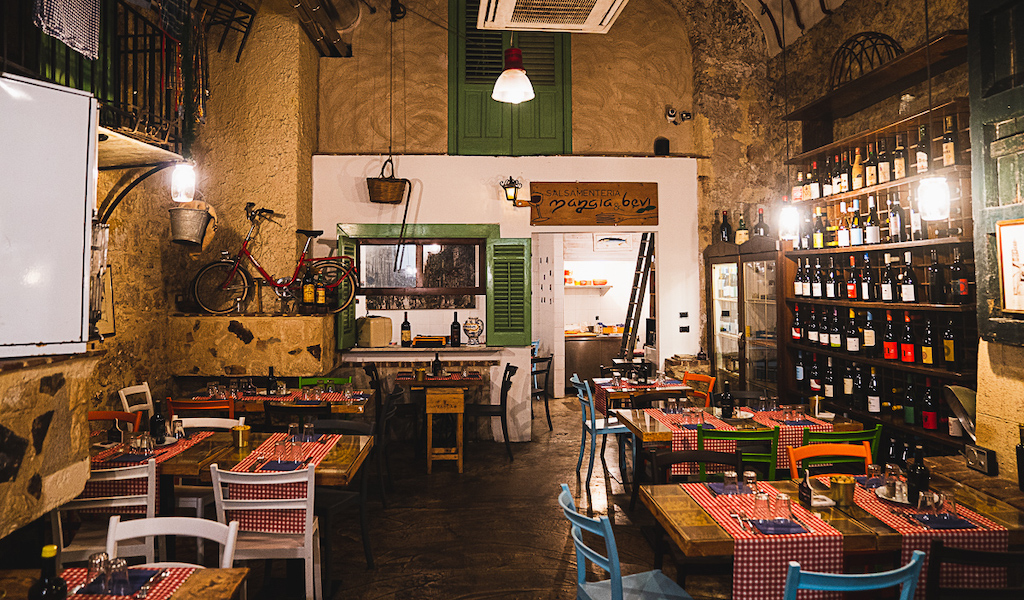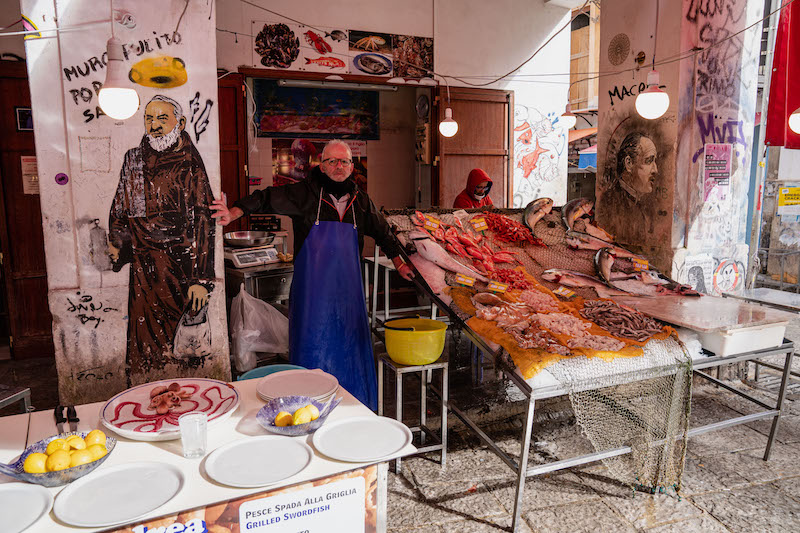We can't find the internet
Attempting to reconnect
Something went wrong!
Hang in there while we get back on track
Search results for "Francesco Cipriano"
Palermo
Trattoria U Zu Caliddu: Made in the Mountains
We’re surrounded by nothing but fresh air and trees as we head into the mountains overlooking Palermo. After a short and scenic drive up the mountain road, around the bend, we spot our destination – Trattoria U Zu Caliddu, a local institution with over eighty years of history. Located in the mountain hamlet of Piano dell'Occhio in Torretta, on the outskirts of Palermo, the restaurant was named after its founder Calogero Bonello, who everyone knew by the nickname Caliddu Aciedda (“Charlie Bird”).
Read morePalermo
El Bocadillo: Street Food Philosopher
Venture inside the Ballarò market – a lively and historic city market in Palermo’s Albergheria district – and you will find yourself catapulted into a sensory experience: the colors of the fruits and vegetables, the smoke from the grills clouding the alleys, the smell of spices mingling with the smell of survival. And then the voices: they all shout here. Or rather: they “abbannìano.” “Abbanniari” is the ancient custom of Palermo street vendors to sing out their goods to attract customers’ attention. Derived from the times and from a world in which marketing studies and advertising techniques had not yet arrived, in which even noticeable signage was a quantum leap that not all merchants could afford, the abbanniata was the democratic and free tool available to street vendors, because all they needed was their own voice.
Read morePalermo
FUD: American Food, Sicilian Style
It may seem absurd to tell the story of Sicilian gastronomic culture through typical American fast food favorites, but that is just part of the culinary richness of this island. This is the concept at FUD: Bottega Sicula, a restaurant that offers the likes of hamburgers, hot dogs, burritos, and fries, all with a distinctive Sicilian touch. From the local ingredients to the clever marketing, everything at FUD is a game of names and flavors. The idea was born in 2012, the brainchild of 47-year-old restaurateur Andrea Graziano. Andrea, originally from Catania, shares that he has always had a passion for cooking: after graduating, he worked for two years in England as a chef, a fate common to many Sicilians.
Read morePalermo
Nni Franco U Vastiddaru: The God of Spleen
Walk around Piazza Marina and you will come across several city monuments and historical sites. You’ll be enchanted by Palazzo Steri, which today houses the university rectory but until a few centuries ago was home to the infamous Inquisition Tribunal. You will also find the place where the famous New York policeman of Italian origin, Joe Petrosino, who came to Palermo to investigate the Sicilian mafia, was murdered in the early 20th century. At the center of the square, in Villa Garibaldi, designed by the famous architect Basile and dedicated to the leader of the Unification of Italy, stands the largest Ficus tree in Europe: a true natural monument that unloads the weight of its prominence on branches that end up expanding its roots by breaking their way through centuries-old sidewalks.
Read morePalermo
Pasticceria Costa: The Sweet Freedom of Choice
The bright refrigerator display case illuminates a long line of pastries filled with cream pastry and topped with fruit, cannoli filled with ricotta, chocolate and fruit cakes, cassatas and almond cookies. "Sicilian pastries are unique in the world," says Riccardo Costa proudly. Alongside his father and sons, Riccardo runs the historic Pasticceria Costa, a true Palermo institution that opened its doors in 1960, a classic bar and pastry shop where you will find Sicilian confectionery excellence. "It all began with my father, Antonino," says Riccardo. Flash back to the post-war years; 1946, to be precise. Antonino Costa was only eight years old and to escape a destiny of hunger and poverty in a city still destroyed by bombs, he began to work as an apprentice, first in a bakery and then in a pastry shop. At the age of eighteen, Antonino Costa opened his own confectionery workshop to supply the various bars in the area, but it was in 1960 that he opened the historic pastry shop that bears his name, on Gabriele D'Annunzio Street.
Read morePalermo
Osteria Mangia e Bevi: To Nonna’s Kitchen We Go
Imagine you are Marcel Proust at the beginning of his novel In Search of Lost Time, or the feared food critic Anton Ego in Ratatouille, the Pixar masterpiece that won the 2008 Oscars for Best Animated Film. In the exact moment you taste a madeleine dipped in tea or a forkful of ratatouille, your palate is activated you are catapulted back in time, to that first Sunday morning you tried the dessert or to that time when, after falling off your bike, the dinner your mother prepared you somehow seemed to make everything better. It is this emotion, this involuntary memory flashback, that cousins Nico Virga and Angelo Fascetta had in mind when they opened their restaurant. Located on Via Cavalieri di Malta, behind the Church of San Domenico – known as the Pantheon of Sicilians – Osteria Mangia e Bevi is a charming eatery that offers not only simple home cooking from Palermo, but also a true taste of grandma's cooking. Grandma Antonietta’s, more specifically.
Read morePalermo
Da Andrea: Guardian of a Slippery Tradition
Descend the steps of Discesa del Caracciolo, leaving Via Roma behind, and you will find yourself in the heart of Palermo’s old Vucciria market, a micro-universe unto itself in which nostalgia hovers in the air and in the eyes of the locals. Typical Sicilian fatalism translates into the saying: “When the balàte of the Vucciria dry out.” The balàte are the typical stones that make up the floor on which the market stands: legend has it that – precisely because of the presence of merchants of all kinds who wash their workbenches at the end of each day – the floor of the Vucciria never fully dries.
Read more